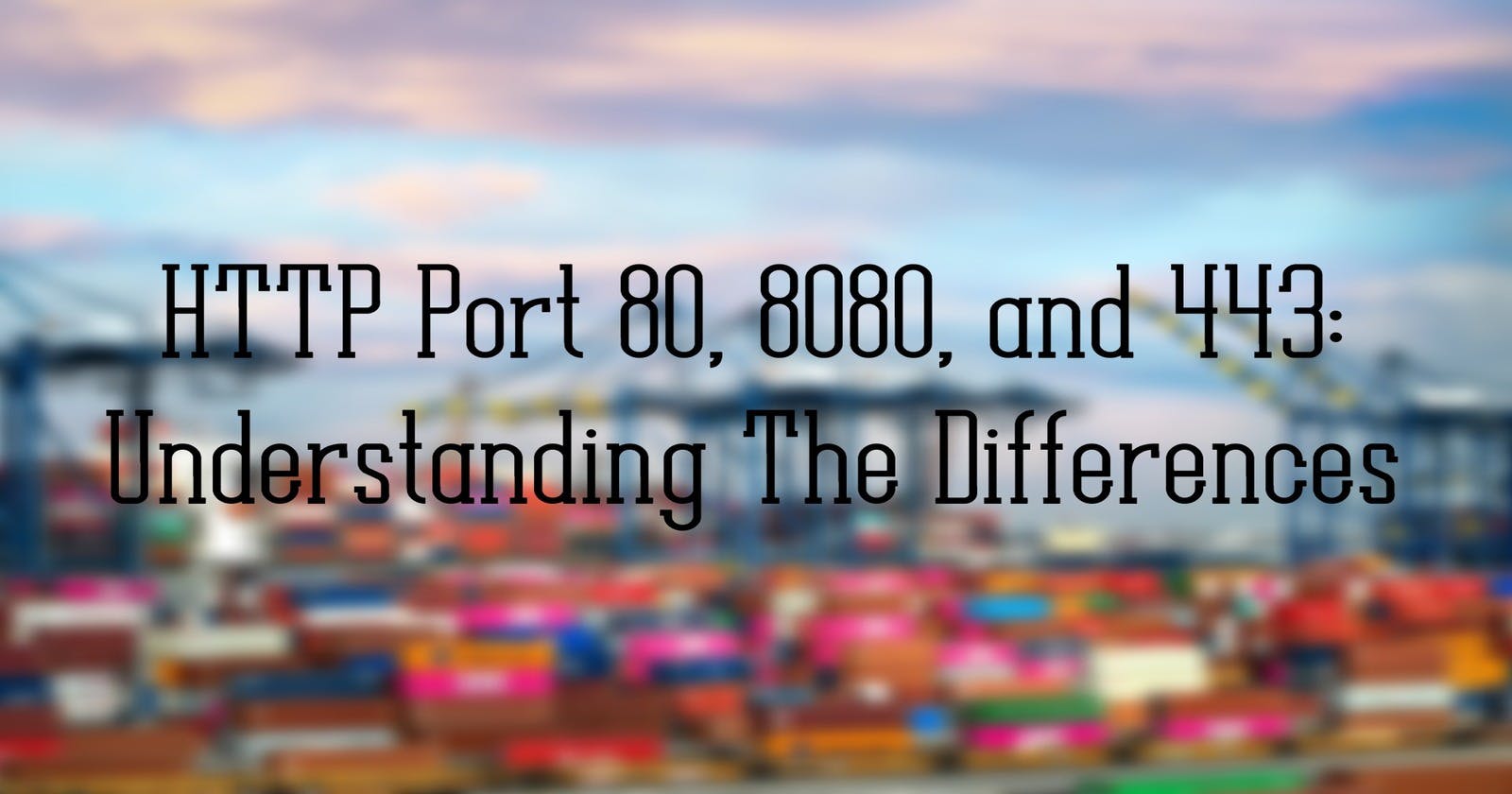HTTP Port 80, 8080, and 443: Understanding The Differences
Exploring the Significance of Ports 80, 8080, and 443
In computer networking, a port number is a unique identifier that helps in the transmission of data between a Computer Network and an Application. The web browser sends a message to the server on a specific port number to request information from it, where the server listens for requests on that mentioned port and then responds accordingly.

When we browse the web, we use HTTP(Hypertext Transfer Protocol) to request and receive data from servers. Let's take a closer look at three HTTP ports: 80, 8080, and 443, and understand their differences.
🎯HTTP Port 80
This is the default port for HTTP traffic. Introduced by Tim Berners-Lee in 1991, this port number has been standardized as the default for HTTP traffic since the early days of the Internet, and it is widely supported by most web servers and clients. When you type a website in your web server, the request will be routed to port 80 on the server by default.
Uses:
Port 80 is commonly used for unencrypted HTTP traffic, because most web content is public and does not require transmission of sensitive data. However, the data sent between the client and the server is not encrypted and can be intercepted by anyone who has access to the network.
🎯HTTP Port 443
This port is used for HTTPS (HTTP Secure) traffic, which is a version of HTTP that uses encryption to provide a secure connection between the client and the server, making it unreadable to anyone who intercepts it. It’s the primary port that the Internet Engineering Task Force (IETF) recognizes for the HTTPS protocol.
HTTPS requires the use of an SSL / TLS (Secure Sockets Layer/Transport Layer Security) certificate, which is issued by a trusted certificate authority (CA). The SSL/TLS certificate is used to establish a secure connection between the client and the server and to verify that the server is who it claims to be.
Uses:
When a client sends an HTTPS request to a web server, it generally uses port 443 as the destination port. This is particularly important for transmitting sensitive information, such as credit card information or login credentials.
🎯HTTP Port 8080
This port is generally used as an alternative HTTP port for web servers and applications. Port 8080 can be useful when port 80 is already in use or when a network firewall blocks traffic on port 80.
Uses:
It is commonly used for proxy servers, testing and development purposes, or remote management.
Differences Between Port 80, 8080, and 443
The main difference between these three ports is the purpose for which they are used.
Port 80 is the default port for unencrypted HTTP traffic and is often blocked by firewalls or ISPs to prevent unauthorized access to the server.
Port 8080 is often used as an alternative HTTP port for web servers and applications and is not blocked by firewalls or ISPs, which makes it a popular choice for developers.
Port 443 which is used for HTTPS traffic, allows data transmission over a secured network and is typically not blocked by firewalls or ISPs, since it is essential for secure communication over the internet.
Summing-up
While all three ports are used for HTTP traffic, they serve different purposes.
Port 80 is the default port for unencrypted HTTP traffic, while Port 8080 is often used as an alternative HTTP port for web servers and applications. Port 443 is used as the default port for encrypted HTTPS traffic, which is essential for transmitting sensitive information securely.
Knowing these ports is crucial for web developers and network administrators to safeguard web apps and ensure secure online communication.
References
Thank you for taking the time to read this blog. Hope you found it informative and enjoyable! Let me know your thoughts and feel free to connect with me on Twitter.
Catch you guys on the next one. Cheers .. ✌️
